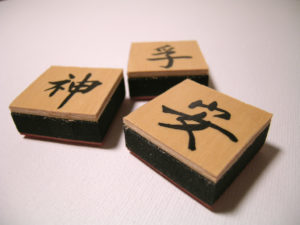The History of Early Stamps
The history of the rubber stamp is long and colorful. Did you know that some of the first stamps were actually made of mud? In ancient India, mud was used to make molds that were used as stamps. Colored juice from fruit, flowers, bark, and other natural materials were used as ink. Some cultures cut impressions into thick animal hides to use as stamps. Talk about a stamp that is hard to refill! Although, it’s safe to say these types of stamps were long-lasting and resilient.
Brass stamps were used for hundreds of years to seal private documents with wax, imprinting the hot wax with the crest of the owner. The theory was that no one could spy on a sealed document without breaking the seal. Now we just use envelopes. You can generally tell when those are tampered with as well, but are much less messy and less likely to burn your fingers when sealing them.
The History of the First Rubber Stamp
Rubber stamps, on the other hand, are more of a recent invention. Rubber was discovered in the Amazon River Basin in 1736 by the French explorer Charles Marie de la Condamine. Cubes were made of the raw rubber and used as pencil erasers, but the raw rubber was unstable. When the temperature rose, the cubes turned to jelly — not very effective as an eraser.
The exact history of the very first rubber stamp is a matter of much debate, but a common belief is that Charles Goodyear was the first to discover the process of creating vulcanized rubber — far more stable than natural rubber — when he accidentally dropped some rubber and sulphur on the stove somewhere between 1839 and 1844 — the exact date differs depending on the source. This lead to Goodyear patenting the process in 1844 and the eventual development of the rubber stamp. Fun fact: Goodyear named the process vulcanization after the Roman god of fire, Vulcan.
The original rubber stamp is rumored to have been created around 1866 by James Woodruff when he took the molding techniques used by dentists and applied them to letter molds. Some time later, mechanical date and letter stamps gained worldwide popularity. By the end of the nineteenth century they became common place in post offices and business workplaces.
The Best Rubber Stamps on the Market Today!
Fortunately, we have access to some of the most advanced rubber stamps on the market today. No more mud, berries, or rubber that turns to jelly. RubberStampStation.com is your number source for the best rubber stamps on the market today!
The History of Early Stamps The history of the rubber stamp is long and colorful. Did you know that some of the first st...




